299 posts
Latest Posts by curiositytherover - Page 4

The Perseid meteor shower over Mt. Hood
Source: https://imgur.com/ssijwh2

Answer Time from Space!
I’m on day 321 of my #YearInSpace, and today I surpassed 500 days in space total. Let’s chat! Sat., Feb. 13 at 1:45 p.m. ET.

Women are better coders, research shows
Researchers from the computer science departments at California Polytechnic State University and North Carolina State University gathered data from nearly 1.4 million GitHub users, and the results are in: Women are better at writing code. The researchers also found proof of a specific bias.
Follow @the-future-now

Physicists in Germany have built the most accurate timepiece on Earth, achieving unprecedented levels of accuracy with a new atomic clock that keeps time according to the movements of ytterbium ions.
Called an optical single-ion clock, the device works by measuring the vibrational frequency of ytterbium ions as they oscillate back and forth hundreds of trillions times per second between two different energy levels. These ions are trapped within an ‘optical lattice’ of laser beams that allows scientists to count the number of ytterbium 'ticks’ per second to measure time so accurately, the clock won’t lose or gain a second in several billion years.
Until very recently, our most accurate time-keepers were caesium atomic clocks - devices that contain a 'pendulum’ of atoms that are excited into resonance by microwave radiation. It’s on these clocks that the official definition of the second - the Standard International (SI) unit of time - is based.
Practical Advice for Aspiring Space Explorers
Washington DC (SPX) Feb 12, 2016 If you’ve read past the title, you’ve probably consumed a lot of books and movies about space. Guess what? Flying in space isn’t just for science fiction characters. It’s a real job. Real people can apply for it, and real people-like you-can get hired to do it. Applying to be an astronaut is easy and costs you nothing. Like any other federal government job, the astronaut application is onl Full article


There’s finally a Tesla that’s priced like a normal car
Follow @the-future-now

This is the spaceship that could bring humans to Mars
Follow @the-future-now

Rosemary Johnson was a promising violinist and member of the Welsh National Opera Orchestra when she was involved in a devastating car crash 27 years ago. The accident left her in a coma for seven months, and the resulting brain damage has robbed her of most of her ability to talk and move.
But thanks to new software that reads people’s brain waves, Johnson has been able to compose music for the first time since 1988, and has had the chance to have it played to her in real time by a professional string quartet.
“It was really very moving,” Eduardo Miranda from the Interdisciplinary Centre for Computer Music Research at Plymouth University in the UK, told The Telegraph.
Why wildfires are necessary
Did you know that several forest species need fire to survive?

In the conifer-rich forests of western North America, lodgepole pines constantly seek the sun. Their seeds prefer to grow on open, sunny ground, which pits saplings against each other as each tries to get more light by growing straighter and faster than its neighbors. Over time, generations of slender, lofty lodgepoles form an umbrella-like canopy that shades the forest floor below. But as the trees’ pine cones mature to release their twirling seeds, this signals a problem for the lodgepole’s future: very few of these seeds will germinate in the cool, sunless shade created by their towering parents.

These trees have adapted to this problem by growing two types of cones. There are the regular annual cones that release seeds spontaneously:

And another type called serotinous cones, which need an environmental trigger to free their seeds:

Serotinous cones are produced in thousands and are like waterproof time capsules sealed with resinous pitch. Many are able to stay undamaged on the tree for decades. Cones that fall to the ground can be viable for several years as well. But when temperatures get high enough, the cones pop open.

Once it’s gotten started, a coniferous forest fire typically spreads something like this: flames ravage the thick understory provided by species like Douglas Fir, a shade-tolerant tree that’s able to thrive under the canopy of lodgepole pines. The fire uses these smaller trees as a stepladder to reach the higher canopy of old lodgepole pines. That ignites a tremendous crown fire, reaching temperatures of up to 2400 degrees Fahrenheit. At those temperatures, the serotinous cones burst open, releasing millions of seeds which are carried by the hot air to form new forests. After the fire, carbon rich soils and an open, sunlit landscape help lodgepole seeds germinate quickly and sprout in abundance. From the death of the old forest comes the birth of the new.

So however counterintuitive it may seem, wildfires are important for the wider ecosystem as a whole. Without wildfires to rejuvenate trees, key forest species would disappear—and so would the many creatures that depend on them. And if a fire-dependent forest goes too long without burning, that raises the risk of a catastrophic blaze which could destroy a forest completely, not to mention people’s homes and lives. That’s why forest rangers sometimes intentionally start controlled burns—to reduce fuels in order to keep the more dangerous wildfires at bay.
From the TED-Ed Lesson Why wildfires are necessary - Jim Schulz
Animation by @provinciastudio






How football relies on human evolution
Here are some insights about human evolution that will change the way you watch the Superbowl game. According to UC San Francisco evolutionary biologist Nathan Young, Ph.D., our species has evolved a specialized shoulder blade that can be used like a slingshot: storing energy in the windup, then rapidly releasing it in a powerful and precise fling.
And neuroscientist Philip Sabes, Ph.D. explains what is required of the brain in order to actually dominate the field.

Patricia Cowings (b. 1948) is an aerospace psychophysiologist, and the first African American woman trained as an astronaut by NASA. She conducted important research over many years at the NASA Ames Research Center in the fields of psychology and physiology.
Her research allowed cosmonauts to learn voluntary self-control to bodily responses, and cure motion sickness in space. She has trained space crews and helped improve their performance and wellbeing during missions. She has received several awards for her contributions to technology and development.
Video Explaining Orbital Mechanics

The size of the Orion spacecraft vs Apollo.

The US space agency has just announced that it’ll be sticking four volunteers inside a tiny house for 30 days, as part of an experiment to test how isolation and “close quarters” affect people’s behaviour. Once inside, the volunteers can’t leave the cabin, and will only be able to regularly communicate with each other and NASA mission control (that means no Internet).
It sounds pretty uncomfortable, but if we want to make it further into space - all the way to Mars, for example - people are going to have to live in cramped spaces for months at a time with very little contact with the outside world, and scientists need to be able to predict the effects - including every little thing that could go wrong.
The compact, three-storey house that the volunteers will be living in is called the Human Research Exploration Analog (HERA), and it’s what NASA is calling a “science-making house”. That means there are lots of little experiments on board to keep the team occupied, like plants to grow and tiny shrimp to take care of.

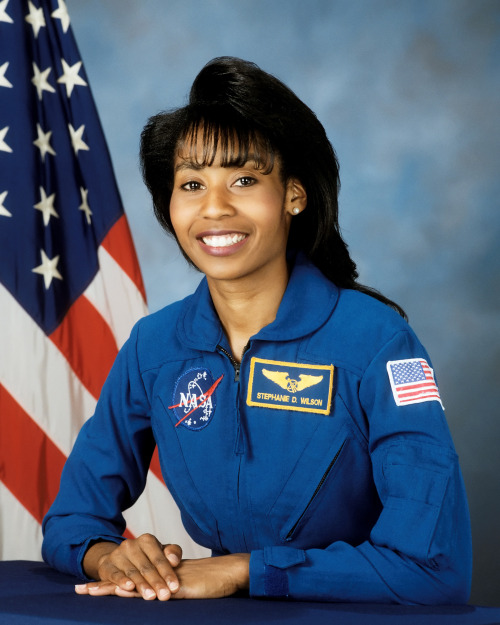
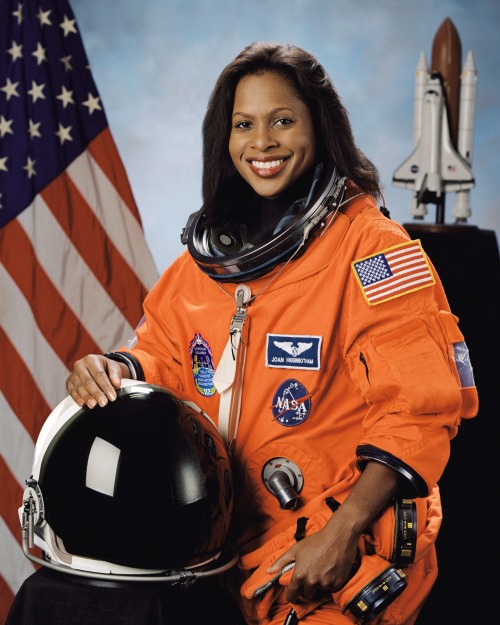
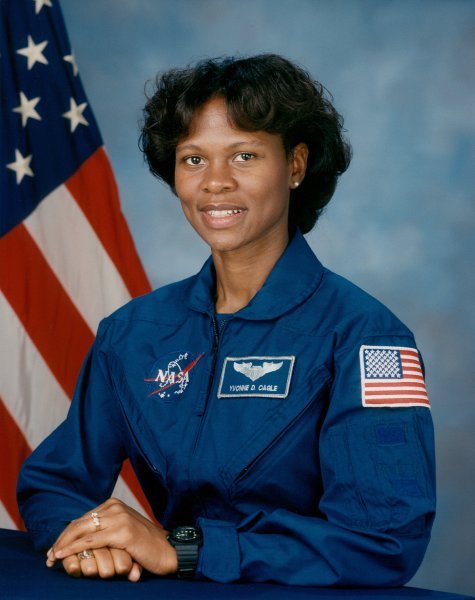
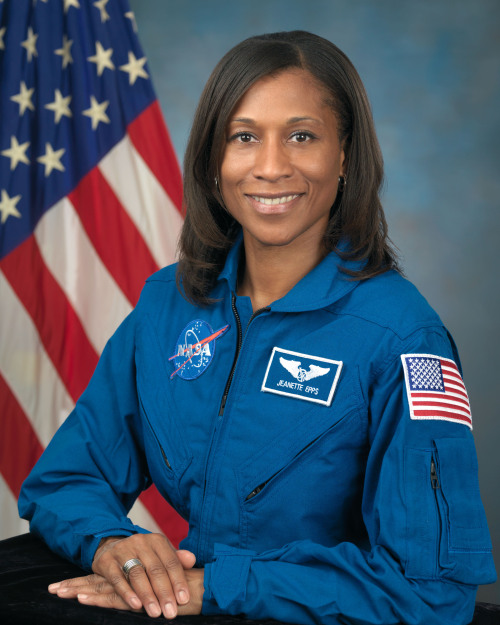
A Salute to Sistas in Space
(From top to bottom and the order in which they went into space)
Dr. Mae C. Jemison
Stephanie D. Wilson
Joan Higginbotham
Dr. Yvonne Cagle
Jeanette J. Epps
Source: 5 Black Female Astronauts You Should Know
Hitchhiking a Ride to Space
Have you ever packed for a long trip with a friend and ran out of space in your suitcase? Maybe your friend was nice and let your spare items hitchhike a ride in their bag? The following science experiments are doing something similar on our Space Launch System rocket.

Our Space Launch System (SLS) will be the most powerful rocket we’ve ever built and will enable astronauts in the Orion spacecraft to travel deeper into the solar system. This advanced launch vehicle will launch astronauts to an asteroid and eventually to Mars, while opening new possibilities for other payloads including robotic scientific missions to places like Mars, Saturn and Jupiter.

The primary goal of SLS and the Orion spacecraft is to launch future crewed, deep space missions. That said, an added bonus of this powerful rocket is the extra science it can carry. On it’s first mission (known as Exploration Mission-1, EM-1) SLS will carry 13 CubeSats (small satellites, each the size of a large shoebox) on its first flight as secondary payloads. These small satellites will perform various in-space experiments. In a way, these 13 CubeSats are ‘space hitchhikers’, catching a ride to deep space where they can gather data valuable to future exploration missions.

How were these 13 experiments selected? Great question. They were selected through a series of announcements of flight opportunities, a public contest and negations with our international partners.
These secondary payloads have a vast array of functions, from taking pictures of asteroids, to using yeast to detect impacts of deep-space radiation. Each month we will highlight one of these experiments on Tumblr and talk about all the exciting science they will do. Just to give you an idea of what these shoebox-sized satellites will do, we’ll give you a preview:
1. NEA Scout

NEA Scout, stands for: Near-Earth Asteroid Scout. This CubeSat will investigate an asteroid, taking pictures and observe its position in space.
2. BioSentinel

BioSentinel will be the first time living organisms have traveled to deep space in more than 40 years. It will use yeast to detect, measure and compare the impact of deep-space radiation on living organisms over long durations in deep space.
3. Lunar Flashlight

This experiment will look for ice deposits and identify locations where resources may be extracted from the lunar surface. It will demonstrate the capability to scout for useful materials and resources from lunar orbit.
4. Skyfire

Lockheed Martin’s Skyfire will perform a lunar flyby, collecting data to address both Moon and Mars Strategic Knowledge Gaps, or gaps in information required to reduce risk, increase effectiveness and improve the design of robotic and human space exploration missions, for surface characterization, remote sensing and site selection.
5. Lunar IceCube

Morehead State University’s Lunar IceCube will look for water in ice, liquid and vapor forms from a very low orbit of only 62 miles above the surface of the moon. The ability to search for useful resources can potentially help astronauts manufacture fuel and necessities to sustain a crew.
6. CuSP

The CubeSat mission to study Solar Particles, or CuSP, will be the first protype of an interplanetary CubeSat space weather station. It will observe space weather events hours before they reach Earth.
7. Luna-H-Map

Lunar Polar Hydrogen Mapper (LunaH) will enter a polar orbit around the moon with a low altitude. From there, it will produce maps of near-surface hydrogen.
8, 9, 10. Three Tournament Payloads

Three of the payloads riding along on this journey will be the winners of the Ground Tournaments portion of our CubeQuest Challenge. This challenge is designed to foster innovation in small spacecraft propulsion and communications techniques. Learn more about this challenge HERE.
11, 12, 13. International Partners
The remaining three payloads are reserved for international partners, and will be announced at a later time.
To stay updated on these experiments, visit: http://www.nasa.gov/launching-science-and-technology.html
Make sure to follow us on Tumblr for your regular dose of space: http://nasa.tumblr.com

We pulled together the week’s top tech stories, just for you:
1. Living in the ‘90s? So are Underwater Wireless Networks Pro tip for anybody experiencing the frustration of heavy lag when you’re trying to watch a streaming video: You might be underwater. Try unplugging your router and plugging it back in again, once you’ve made it to dry land. via: Cellular News
2. Man survives 48 straight hours in VR with no reported nausea This is great news for pretty much everybody involved. Of course, if you believe in the many-worlds theory, there’s some alternate timeline where two whole days of this guy’s life were a real bummer. via: @arstechnica
3. When Virtual Reality Meets Education A bold step forward in the radical plan to unseat “time for recess!” as the most exciting thing students hear at school. via: @techcrunch
4. In a Huge Breakthrough, Google’s AI Beats a Top Player at the Game of Go One 2,500-year-old game. One 19-by-19 grid. Two players. One human brain. One state-of-the-art neural network. 170 GPU cards. 1,200 standard processors. 250 possible moves for any given turn. (Go figures). via: @wired

Astronomers Have a New Tool in the Search For Habitable Exoplanets
The quest for habitable alien worlds may get a whole lot easier. http://futurism.com/astronomers-have-a-new-tool-in-the-search-for-habitable-exoplanets/

Scientists Create A Potential High-Efficiency Wireless Power System
With this, the world is one step closer to Nikola Tesla’s dream of wireless electricity. http://futurism.com/scientists-creates-potential-high-efficiency-wireless-power-system/
Getting real - on Mars
Boston MA (SPX) Jan 28, 2016 NASA wants you to know that it’s only a matter of months before you can wake up in a Martian habitat, grab some breakfast, jump into your spacesuit, and head out for a stroll across the Red Planet’s surface. Granted, the experience will be virtual, but it promises be the most realistic vision of human Mars habitation that a team comprising NASA engineers, a digital media developer, and MIT Depar Full article
Chasing Storms at 17,500mph
Flying 250 miles above the Earth aboard the International Space Station has given me the unique vantage point from which to view our planet. Spending a year in space has given me the unique opportunity to see a wide range of spectacular storm systems in space and on Earth.
The recent blizzard was remarkably visible from space. I took several photos of the first big storm system on Earth of year 2016 as it moved across the East Coast, Chicago and Washington D.C. Since my time here on the space station began in March 2015, I’ve been able to capture an array of storms on Earth and in space, ranging from hurricanes and dust storms to solar storms and most recently a rare thunder snowstorm.

Blizzard 2016

Hurricane Patricia 2015

Hurricane Joaquin 2015

Dust Storm in the Red Sea 2015

Dust Storm of Gobi Desert 2015

Aurora Solar Storm 2015

Aurora Solar Storm 2016

Thunderstorm over Italy 2015

Lightning and Aurora 2016

Rare Thunder Snowstorm 2016
Follow my Year In Space on Twitter, Facebook and Instagram.
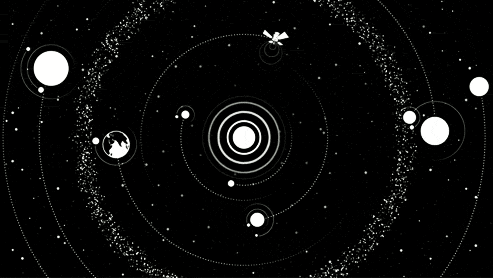

Solar Power Explorers

Watch This New Drone Capture Rogue Drones with a Net Cannon
Scientists at Michigan Tech University have made an interceptor drone that is capable of “catching” other drones using a mounted net cannon.See it in action: http://futurism.com/videos/new-drone-can-capture-rogue-drones-net-cannon/

On the home stretch to Jupiter, NASA’s Juno probe has made history, becoming the most distant solar-powered spacecraft ever launched by humankind.
Juno broke the record this week at 19:00 UTC on Wednesday, January 13, hitting a whopping 793 million kilometres (493 million miles) from the Sun – not too shabby for a vessel that relies on solar rays to keep the lights on.
Juno pipped the European Space Agency’s Rosetta spacecraft, the orbit of which hit a high point of 792 million kilometres (492 million miles) in October 2012 as it homed in on the comet 67P/Churyumov-Gerasimenko.

Cryovolcanoes: Meet the Frozen Volcanoes on Pluto
Scientists spotted a possible ice volcano on the surface of Pluto. At about 90 miles (150 kilometers) across and 2.5 miles (4 kilometers) high.
Scientists have assembled the highest-resolution color view of one of the cryovolcanoes.
If confirmed, it would be the largest such feature discovered in the outer solar system. More at: http://go.nasa.gov/1mYCtyZ

When Catharine Conley started her job at NASA, her predecessor gave her a pair of dark Ray Ban sunglasses. It’s only fitting — Conley is a real-life version of the famously shaded title characters in the 1997 movie Men in Black. Part of her job as planetary protection officer is to keep Earth safe from alien life. But, as far as we know, Earthlings are the ones regularly hopping around the solar system, so most of her job is to protect aliens from the human race.
Continue Reading.

Russia will send these robots to space in place of humans
The anthropomorphic bot is a collaboration between robotics lab Android Technics and TsNIIMash, a Russian institute for building machines, according to Sputnik International. Alexander Permyakov, Director-General of Android Technics, told the news agency that these robots will be able to “completely replace human” in certain circumstances.
Follow @the-future-now

Ridiculous History: H-bombs in Space Caused Light Shows, and People Partied. Find out more on HowStuffWorks NOW.